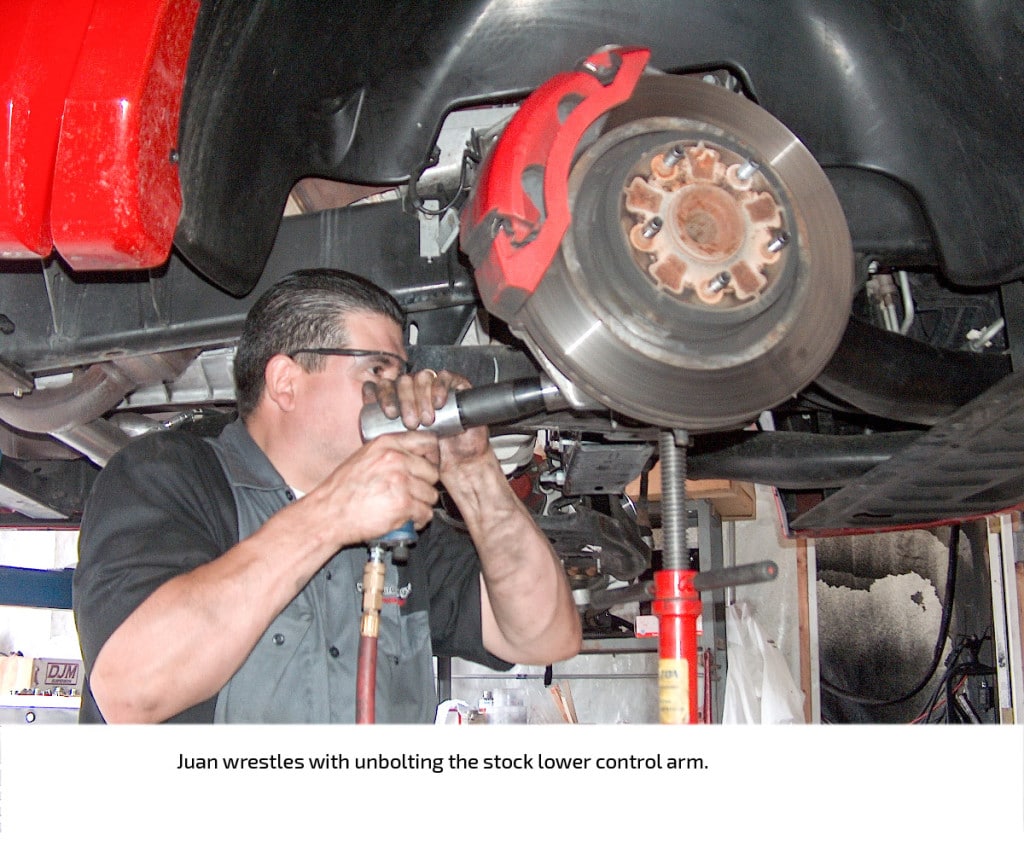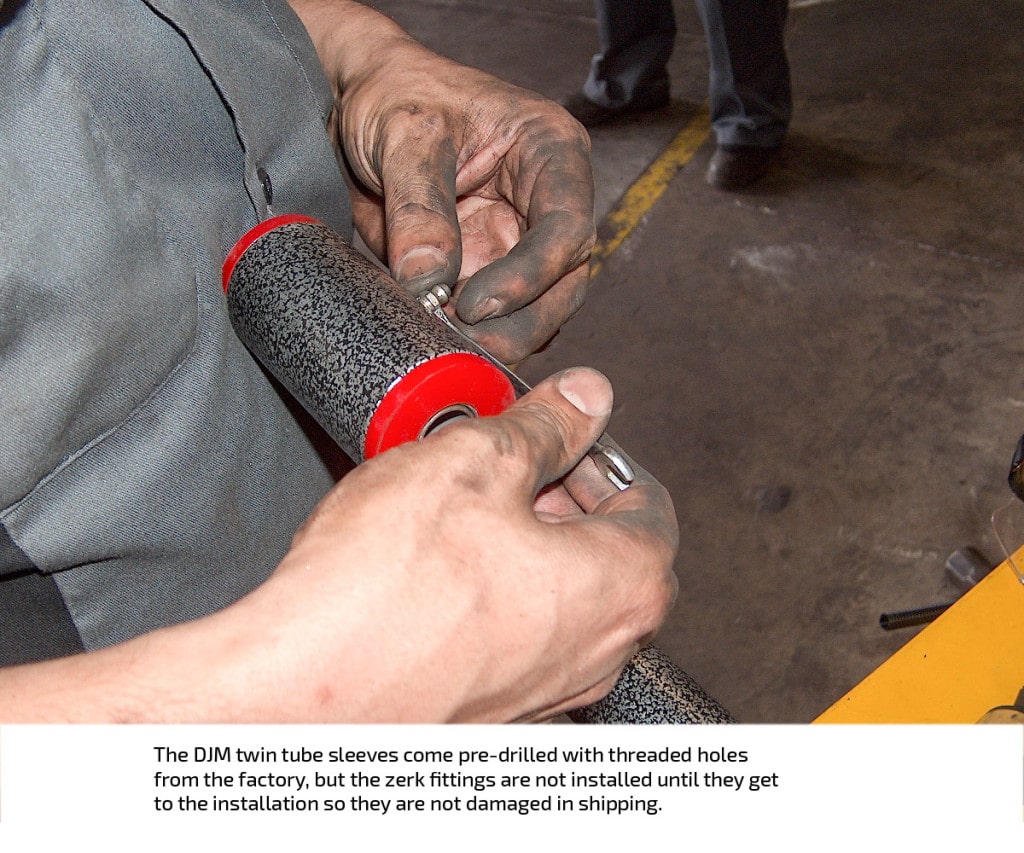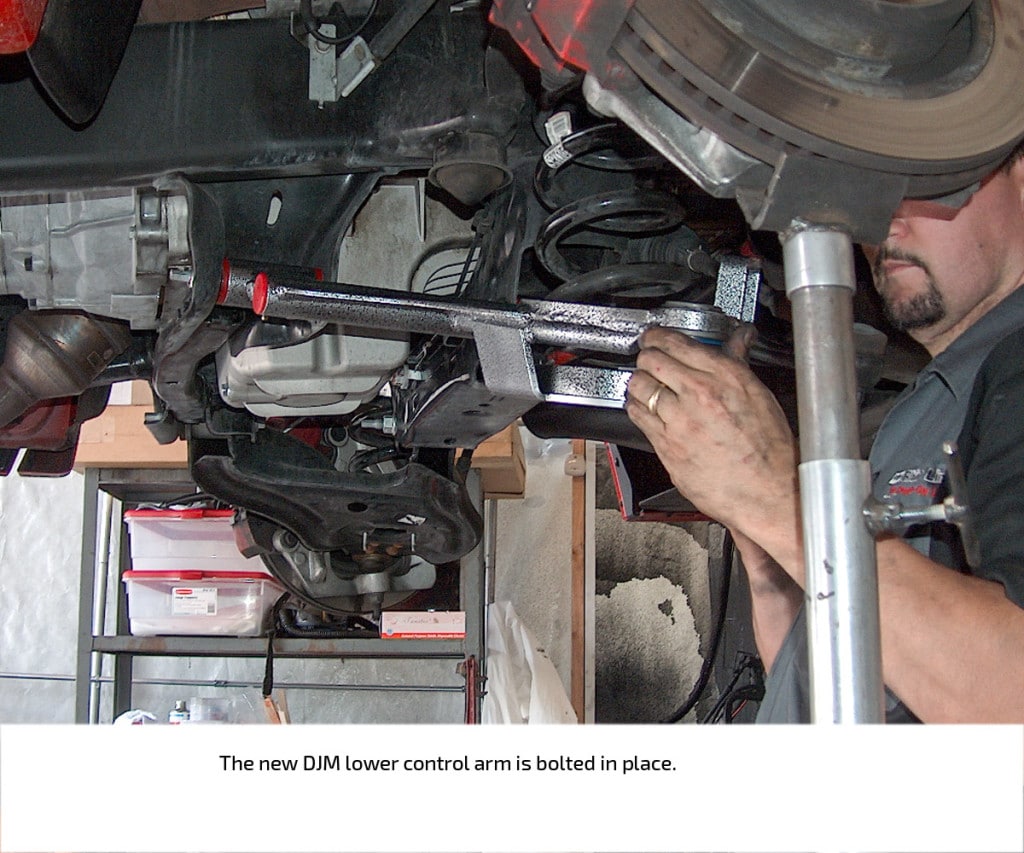Dropping a 2005 Dodge Viper!
A DJM DROP FOR THE VIPER SRT-10
DJM cuts a couple of inches out of the ride height of a limited edition Dodge Viper with Class A parts…
Story & photos by Marshall Spiegel
This article deals with dropping an ’05 Dodge Viper a couple of inches in the front and a couple of inches in the rear. But the fact that the subject vehicle is a bright red, “big-bucks” SRT-10 is not the real story. Nor is the real story about the good guys at Pacific Muffler & Accessories (PMA) in Gardena, CA, who did the suspension modification. And finally, the “hot tale” is not really about vehicle stance or wheel clearance or “drive-ability” or any of that automotive magazine stuff.
The real story is about DJM twin tube sleeves that now come pre-drilled with threaded holes for grease fitting; the latest DJM control arms that now come with a new ball joint and “lube” boot and new DJM super-strong steel lowering blocks. If you’ve been around this suspension modification business for a while, you may remember when those twin tube sleeves from DJM Suspension had to be drilled for lubrication holes. You may also remember when tearing a stock boot removing a ball joint on a control arm was reason for suicide. And who can forget those aluminum-lowering blocks that weren’t quite strong enough for the more powerful vehicles. Installers still have to screw the zerk fittings into those DJM twin tube sleeves, but that’s because the factory doesn’t want to risk having them broken in shipping. But it looks like the technology at DJM has come a long way.
Therefore, it was altogether fitting that quality components from DJM were selected to lower this Dodge Viper. Here’s the deal. The installation involved a couple of two-inch lowering blocks to drop the rear and a couple of well-engineered DJM lower control arms to drop the front two inches. Juan Morales, the technician at Pacific Muffler & Accessories (PMA) who did the honors didn’t have to sweat tearing the stock boot or damaging the stock ball joints while removing them. The new DJM control arms he was installing come with new boots and ball joints. He didn’t have to sweat the DJM lower control arms because they fit perfectly and provided a perfect two-inch drop. The DJM kit had been engineered so it would, in no way, alter the Viper’s ride and handling. The install was “vanilla” all the way. And the result was a “mucho” expensive Dodge Viper SRT-10 that was exactly the same, just a couple of inches closer to the ground.
The photos show the highlights of the install, Check them out!
SIDEBAR:
DJM President Jeff Ullmann on the Stock Suspension of the Dodge Viper SRT-10…..
Jeff Ullmann, president and founder of DJM Suspension of Gardena, CA, has been in the suspension business since 1977. He’s one of those guys who can visualize exactly what the suspension components of a vehicle are doing as he drives it down the road. He’s one of those guys who has spent as much time under vehicles as most of us have in them. He’s one of those guys who knows what all those suspension components—control arms and coil springs and shocks and bump stops and ball joints—should be doing and how they should relate to each other. And he’s one of those guys who can redesign a suspension component in his head so that when it is translated into steel it does its job a bit differently, a bit better.
So when I asked him about the stock suspension of the ’05 Dodge Viper SRT-10, I sat silently; attentively and respectfully awaiting his answer.
“I really didn’t spend enough time behind the wheel to get a true picture,” he began, “but the
owner was expressive enough about his complaints for me to know what to investigate.
“Once we got beyond all the pride of ownership in his expensive, limited production super truck, the owner leveled with me.”
“It has a load of power,” he announced, not telling me anything I didn’t already know, “Unfortunately, it tends to get a little ‘squirrelly’ in the handling department. For some reason, it doesn’t stay in its lane like other vehicles. It has a tendency to wanderer, to change lanes, to track wherever it feels like. When it is driven on the freeway, the slightest bump will cause it to veer out of its lane.
“After a careful examination of the stock suspension,” continued Ullmann, “I concluded that the bump stops were too close to the control arms. As a result, in some situations the travel of one control arm at a time would be stopped by the bump stop and not the other, thereby causing the erratic handling. The DJM 2”lowering kit about to be installed would solve the problem.”
Ullmann was right. After the Viper SRT-10 was dropped 2”with the DJM lower control arms in front and lowering blocks in the rear, the owner reported that the Viper no longer exhibited the erratic handling.
--Marshall Spiegel























